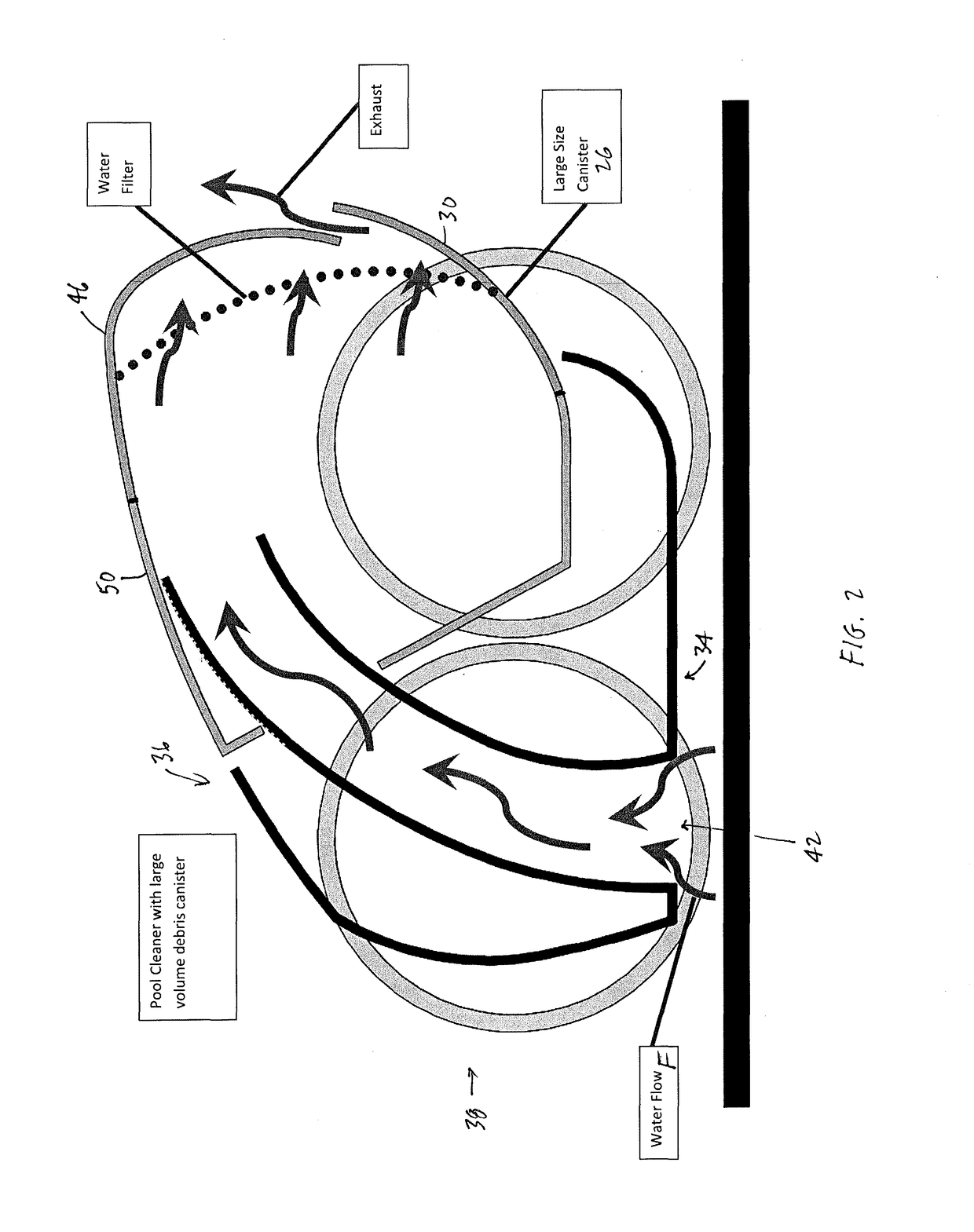Rear-oriented debris canister
- Summary
- Abstract
- Description
- Claims
- Application Information
AI Technical Summary
Benefits of technology
Problems solved by technology
Method used
Image
Examples
Embodiment Construction
[0017]FIG. 1 illustrates an exemplary APC 10 including body 14 and drive system 18. In use within a vessel, APC 10 normally travels in the direction of arrow A. Accordingly, area 22 of body 14 may be defined as the “rear” of APC 10.
[0018]Shown as connected to area 22 is exemplary canister 26 for collection of debris ingested by APC 10 during operation. Clear from FIG. 1 is that canister 26 need not extend above (or below) body 14, instead protruding rearward from area 22. Stated differently, canister 26 is designed so as not to be wholly internal to body 14 yet not materially increase hydraulic drag as APC 10 moves within a swimming pool.
[0019]In the version of APC 10 shown in FIG. 1, canister 26 extends the entire width of area 22 of body 14. While such extension is not mandatory, the larger width of canister 26 significantly decreases the restriction otherwise present on water flowing therethrough. Consequently, the associated water-circulation pump need not work as hard as with a...
PUM
| Property | Measurement | Unit |
|---|---|---|
| Mesh size | aaaaa | aaaaa |
| Size | aaaaa | aaaaa |
| Width | aaaaa | aaaaa |
Abstract
Description
Claims
Application Information
 Login to View More
Login to View More - R&D
- Intellectual Property
- Life Sciences
- Materials
- Tech Scout
- Unparalleled Data Quality
- Higher Quality Content
- 60% Fewer Hallucinations
Browse by: Latest US Patents, China's latest patents, Technical Efficacy Thesaurus, Application Domain, Technology Topic, Popular Technical Reports.
© 2025 PatSnap. All rights reserved.Legal|Privacy policy|Modern Slavery Act Transparency Statement|Sitemap|About US| Contact US: help@patsnap.com



